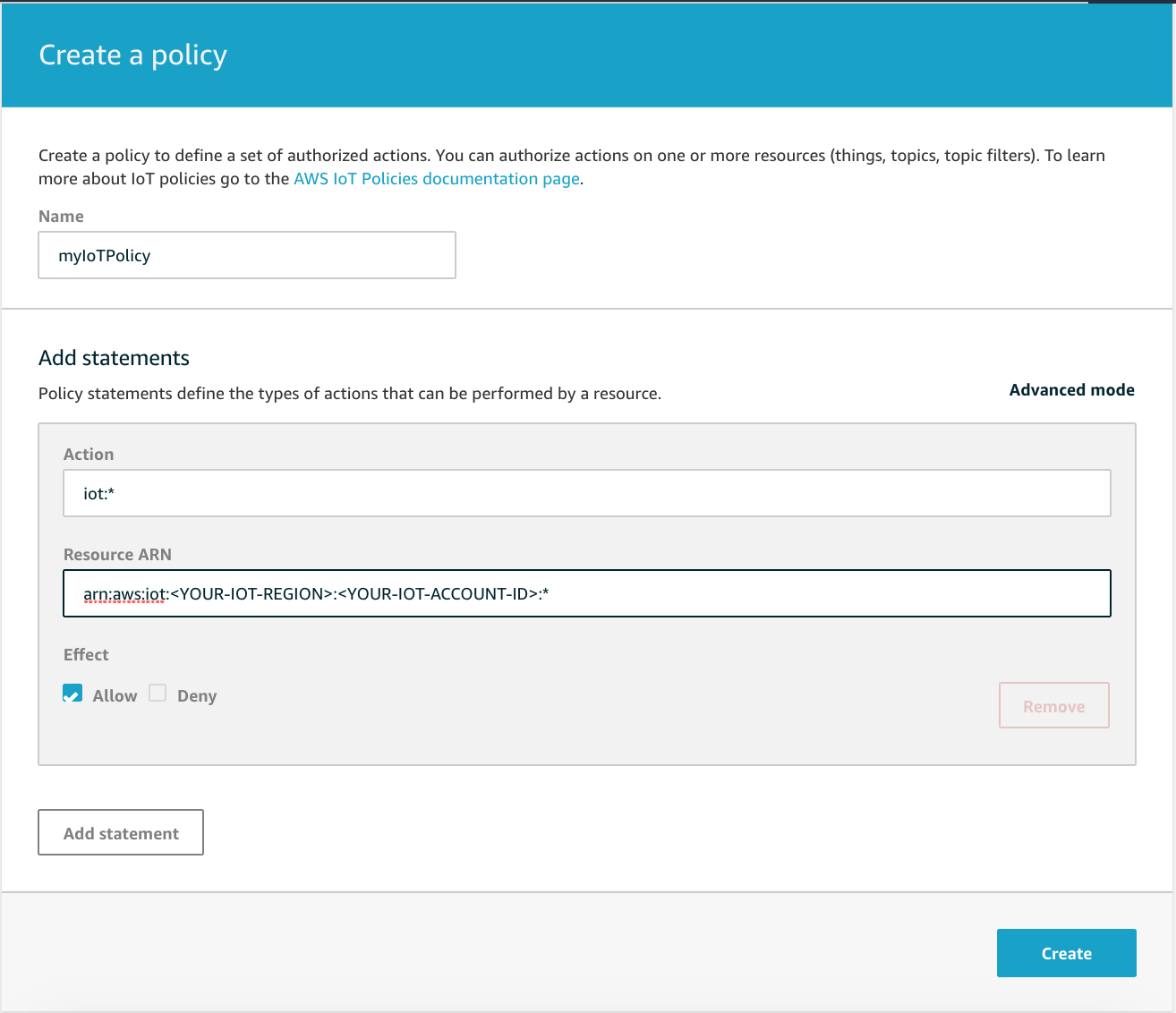PubSub
The AWS Amplify PubSub category provides connectivity with cloud-based message-oriented middleware. You can use PubSub to pass messages between your app instances and your app’s backend creating real-time interactive experiences.
PubSub is available with AWS IoT and Generic MQTT Over WebSocket Providers.
With AWS IoT, AWS Amplify’s PubSub automatically signs your HTTP requests when sending your messages.
Installation and Configuration
AWS IoT
When used with AWSIoTProvider, PubSub is capable of signing request according to Signature Version 4.
To use in your app, import AWSIoTProvider:
import Amplify, { PubSub } from 'aws-amplify';
import { AWSIoTProvider } from '@aws-amplify/pubsub/lib/Providers';
Define your endpoint and region in your configuration:
// Apply plugin with configuration
Amplify.addPluggable(new AWSIoTProvider({
aws_pubsub_region: '<YOUR-IOT-REGION>',
aws_pubsub_endpoint: 'wss://xxxxxxxxxxxxx.iot.<YOUR-IOT-REGION>.amazonaws.com/mqtt',
}));
Find your aws_pubsub_endpoint by logging onto your AWS Console, choose IoT Core from the list of services, then choose Settings from the left navigation pane.
Create IAM policies for AWS IoT
To use PubSub with AWS IoT, you will need to create the necessary IAM policies in the AWS IoT Console, and attach them to your Amazon Cognito Identity.
Go to IoT Core and choose Secure from the left navigation pane. Then navigate to Create Policy. The following myIoTPolicy policy will allow full access to all the topics.

Attach your policy to your Amazon Cognito Identity
The next step is attaching the policy to your Cognito Identity.
You can retrieve the Cognito Identity Id of a logged in user with Auth Module:
Auth.currentCredentials().then((info) => {
const cognitoIdentityId = info.data.IdentityId;
});
Then, you need to send your Cognito Identity Id to the AWS backend and attach myIoTPolicy. You can do this with the following AWS CLI command:
aws iot attach-principal-policy --policy-name 'myIoTPolicy' --principal '<YOUR_COGNITO_IDENTITY_ID>'
Allowing your Amazon Cognito Authenticated Role to access IoT Services
For your Cognito Authenticated Role to be able to interact with AWS IoT it may be necessary to update its permissions, if you haven’t done this before.
One way of doing this is to log to your AWS Console, select CloudFormation from the available services. Locate the parent stack of your solution: it is usually named <SERVICE-NAME>-<CREATION_TIMESTAMP>.
Select the Resources tab and tap on AuthRole Physical ID.
The IAM console will be opened in a new tab. Once there, tap on the button Attach Policies, then search AWSIoTDataAccess and AWSIoTConfigAccess, select them and tap on Attach policy.
Failing to grant IoT related permissions to the Cognito Authenticated Role will result in errors similar to the following in your browser console:
errorCode: 8, errorMessage: AMQJS0008I Socket closed.
Third Party MQTT Providers
Import PubSub module and related service provider plugin to your app:
import { PubSub } from 'aws-amplify';
import { MqttOverWSProvider } from "@aws-amplify/pubsub/lib/Providers";
To configure your service provider with a service endpoint, add following code:
// Apply plugin with configuration
Amplify.addPluggable(new MqttOverWSProvider({
aws_pubsub_endpoint: 'wss://iot.eclipse.org:443/mqtt',
}));
You can integrate any MQTT Over WebSocket provider with your app. Click here to learn more about MQTT Over WebSocket.
Working with the API
Subscribe to a topic
In order to start receiving messages from your provider, you need to subscribe to a topic as follows;
PubSub.subscribe('myTopic').subscribe({
next: data => console.log('Message received', data),
error: error => console.error(error),
close: () => console.log('Done'),
});
If multiple providers are defined in your app you can include the specific provider you would like to subscribe to:
PubSub.subscribe('myTopic', { provider: 'AWSIoTProvider' }).subscribe({
//...
});
PubSub.subscribe('myTopic', { provider: 'MqttOverWSProvider' }).subscribe({
//...
});
Note: If you do not include a specific provider it will subscribe to all of the configured PubSub providers in your app.
Following events will be triggered with subscribe()
| Event | Description |
next |
Triggered every time a message is successfully received for the topic |
error |
Triggered when subscription attempt fails |
close |
Triggered when you unsubscribe from the topic |
Subscribe to multiple topics
To subscribe for multiple topics, just pass a String array including the topic names:
PubSub.subscribe(['myTopic1','myTopic1']).subscribe({
//...
});
Publish to a topic
To send a message to a topic, use publish() method with your topic name and the message:
await PubSub.publish('myTopic1', { msg: 'Hello to all subscribers!' });
If multiple providers are defined in your app you can pass the message to a specific provider:
await PubSub.publish('myTopic1', { msg: 'Hello to all subscribers!' }, { provider: 'AWSIoTProvider' });
You can also publish a message to multiple topics:
await PubSub.publish(['myTopic1','myTopic2'], { msg: 'Hello to all subscribers!' });
Note: If you do not include a specific provider it will publish a message to all of the configured PubSub providers in your app.
Unsubscribe from a topic
To stop receiving messages from a topic, you can use unsubscribe() method:
const sub1 = PubSub.subscribe('myTopicA').subscribe({
next: data => console.log('Message received', data),
error: error => console.error(error),
close: () => console.log('Done'),
});
sub1.unsubscribe();
// You will no longer get messages for 'myTopicA'
API Reference
For the complete API documentation for PubSub module, visit our API Reference
Using Modular Imports
If you only need to use PubSub, you can do: npm install @aws-amplify/pubsub which will only install the PubSub module for you.
Note: if you’re using Cognito Federated Identity Pool to get AWS credentials, please also install @aws-amplify/auth.
Then in your code, you can import the PubSub module by:
import PubSub from '@aws-amplify/pubsub';
PubSub.configure();



